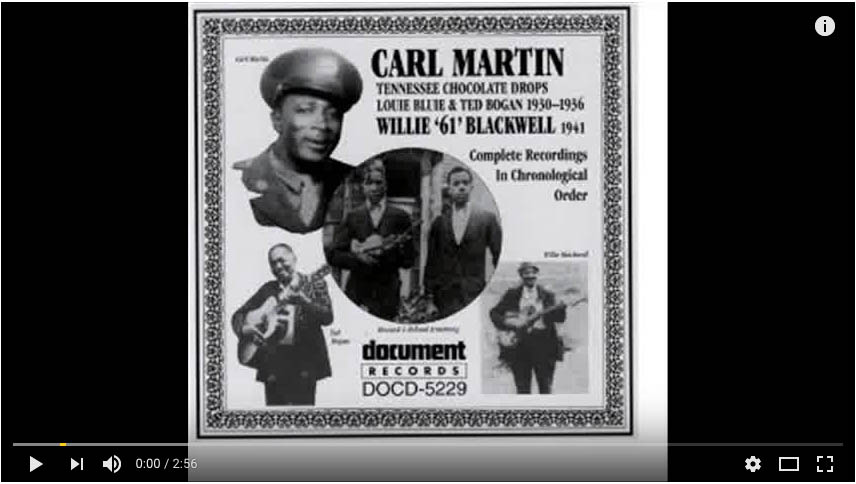For our new “Pick 5” blog series, we ask members of the Radio Bristol team to pick five songs within a given theme – from heartsongs to murder ballads and everything in between! Once they pick their “5,” they get the chance to tell us more about why they chose those songs. With a diverse staff of knowledgeable DJs, we’re sure to get some interesting song choices, which might introduce you to some new music, all easily accessible by tuning into Radio Bristol!
For our first “Pick 5,” I thought it would be interesting to look at the some of the black fiddle traditions found in early country music. Many African American artists that recorded during the 1920s and 1930s came from a stringband background, a style predating the blues, and many of these artists were influential in shaping some of the modern sounds of early commercial country music. I find the merging of the fiddle traditions of the 19th century and the more contemporary sounds found in the blues (which were often guitar-based but sometimes also incorporated fiddle) particularly inspiring. I chose five songs that highlight this cross-pollination of musical style and culture, songs where the sounds of stringbands, blues and jazz came together to create something altogether different. This is by no means intended to cover the scope of black fiddle traditions – instead these are only a few of the many recordings I find to be particularly cool. The artistry found on these records is pretty awe-inspiring to say the least. Have a listen!
“Forty Drops,” Andrew and Jim Baxter, 1928, Atlanta, GA
Forty drops of what? Forty drops of Rye! Maybe that accounts for the greasy slippery fiddle heard on this record…but I doubt it. This is country fiddling at its finest. Or is it blues fiddling? I’d say it’s both. The Baxter’s records were sold as a race records yet they could have just as easily sold as hillbilly records.
“That’s It,” Mississippi Sheiks, 1930, San Antonio, TX
A very fitting title to this hot fiddle number. Interestingly, this record was issued on OKeh’s country label and was marketed to a white audience. The Sheiks entire catalog is incredible and worth checking out if you haven’t done so yet.
“Sweet to Mama,” State Street Boys, 1935, Chicago, IL
Big Bill Broonzy on the fiddle?! Yep, not only could he tear it up on the guitar but he learned to fiddle at an early age and was pretty well versed as this song illustrates. This song has the same melody and some of the same verses as another hillbilly classic, “Blues in the Bottle,” as recorded by Prince Albert Hunt in 1927 in San Antonio. I got to listen to an incredibly clean copy of the State Street Boys record at a recent visit to collector Joe Bussard’s house, and it was a completely different listening experience to say the least. It was as if the band was playing in the room just for us.
https://www.youtube.com/watch?v=koWgVIYXfOY
“Rosalie,” Son Sims Four, 1942, Clarksdale, MS
This one, a straight-ahead blues song, features a young Muddy Waters, who played with Henry “Son” Sims before making his way up north. Not only is this an incredible document of early Waters, but it shows the great musical depth from which he came. Sims commercially recorded with Charley Patton for Paramount in the late 1920s as well.
“Knox County Stomp,” Tennessee Chocolate Drops, 1930, Knoxville TN
The virtuosity and unique character of Howard Armstrong – aka Louie Bluie – shines right through on “Knox County Stomp.” This record highlights the tenacity, energy, and passion of a true innovator willing to walk out on to the edge of a musical cliff. Wait for the pizzicato plucking midway through and you’ll see what I mean. Exciting to say the least! Louie Bluie and the Tennessee Chocolate Drops are a perfect example of a band that wasn’t defined by the genres and subgenres we now associate with American music.
So that’s my “Pick 5” – five songs exemplifying a small range of the talent and virtuosity found in early black fiddle traditions. I hope these songs – and the brief view into their background – piqued your interest and maybe introduced you to some new sounds!


